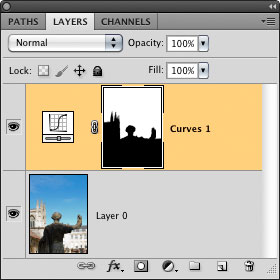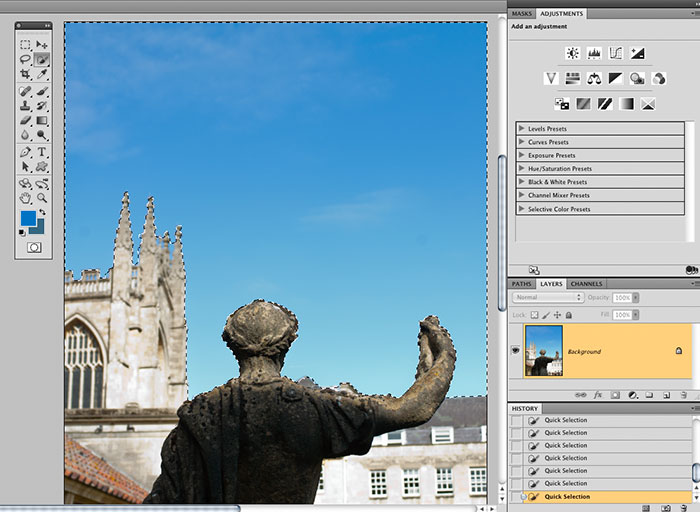Digital Imaging Tips by Dan Moughamian
One of the most important techniques you can learn in Photoshop is the ability to mask your layers. This allows you to isolate changes to specific areas, while leaving others unaffected or only partially affected. There are many ways to create layer masks (as many ways as there are to create selections) but for many shots I find the following steps work great, especially when there are distinct color regions to help guide you.
1. Activate the Quick Selection tool (tap W or Shift-W if the Magic Wand tool is active when you start this process), then, using a region of contiguous color, click and drag until all or most of the region is selected. Use Shift-click to add and Option/Alt-click to remove regions from the initial selection. You don’t have to get it perfect just get close!
2. Click the Refine Edge button in the Options Bar, and when the dialog window opens, you should see a black “mask” cover the unselected parts of your image. Click the Refine Radius option and set your radius high enough so that as you brush over the edges of your selection, Photoshop can detect where the color and contrast changes. I find a setting between 2 and 10 pixels will usually do the trick. Some experimentation is required.
3. Using the Refine Radius tool (which is active by default in the Refine Edge dialog), roughly brush over over all of the edges in your selection, outlining your entire subject. When you finish the brush stroke, after a second or two, you should have a very precise looking selection. Again you can hold down the Option/Alt key as you brush to mask pixels you don’t want selected. If needed, use the Adjust Edge controls to soften the selection or expand/contract its boundary slightly. Click OK when you’re finished.

4. Now you should have a precise selection, and are ready to create your layer mask. To add the layer mask to an adjustment layer, simply add the type of adjustment layer you want from the Adjustments panel and the mask will be created automatically! From this point any settings you create with that specific adjustment, will not affect the areas shown in black.
Note: to create a layer mask for a standard pixel layer, just highlight the layer you want to use and from the bottom of the Layer’s panel click the “Add Layer Mask” button (third from left). Simple!
———-
Dan Moughamian is an experienced photographer and educator, and has worked
with Adobe Photoshop since the early 1990s. He also has extensive
experience with Photoshop Lightroom, Photoshop Elements, plugins from Nik
software, and many other digital imaging products. As a long-time member
of their testing programs, Dan has collaborated with Adobe Systems to help
enhance many of the core functions in Photoshop, Lightroom, and Elements.
As an educator, Dan’s focus is to help photographers at all levels get the
most from their digital workflows. Tips on raw editing, layer masking,
alpha channels, image adjustments, HDR photography, focus and lighting
effects, and perspective correction, are just a few examples of the topics
he covers. To learn more, you can visit Colortrails.com, and follow Dan on Twitter, and on Google Plus.
He is the Author of Adobe Digital Imaging HOW-TOs- 100 Essential Techniques for Photoshop CS5, Lightroom 3 and Camera RAW 6, and his work has been also been published in Photoshop User Magazine and Photo Techniques Magazine.




What a great and interesting post. This could be the solution that I need. I’ll set up a trial site to be sure it’ll work and as important I can work it!. Thank you for taking the time to put together this post.Ian